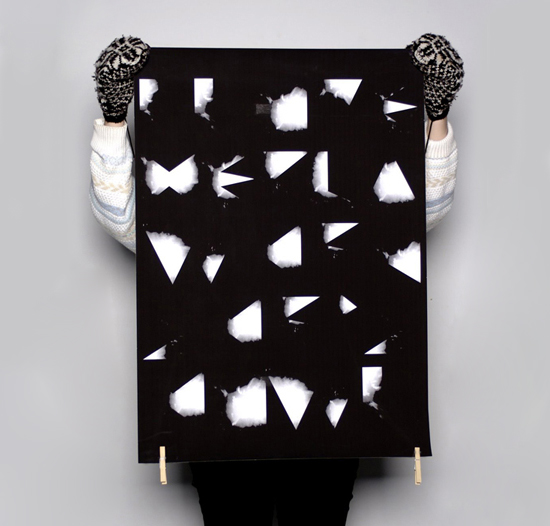Synesthesia is sometimes described as “extra” brain-wiring between senses in the brain, for instance hearing a sound may trigger a color, letters or numbers can have colors and words can have taste. It is said that all babies are synesthetes and that they lose their connections with growth, while adult synesthetes are the ones that didn’t. And although it is a genetically inherited trait, synesthesia can also be experienced sometimes though the use psychedelic drugs.
We all have synesthetic experiences on a certain extent in our everyday life when we bridge some experiences between different senses (like the auditory with the visual systems with the Bouba/kiki effect ). As V. Ramashandran states this “Cross modal synesthetic abstractions” are a basic form of abstraction that trigger metaphors. In this perspective the study of the synesthetic phenomenon is interesting because it works in the same way as the regular creative processes of associations based on metaphors. These studies are a possible gateway to understand creative processes that are sometimes described as “divine inspiration” though a scientific method, and therefore develop new methodologies to archive it.

Hekla ∞ For an icelandic Volcano by Claudia Mougin
We got the chance to interview Claudia Mougin, a synesthete graphic designer with both color > sound (chromaphonia) and grapheme > color characteristics, and we present some of the answers below:
– Can you describe us how do you experience synesthesia?
CM – I don’t related synesthesia as an experience. It would be like saying that breathing is an experience: that’s something quite obvious. I just know that synesthesia help me to build logical systems in my head to remember things and create associations between them. These systems are in connection with the color characteristics and I think it explains my passion to editorial design which has letters, words, numbers and lecture matters.
– How often synesthetic experiences are triggered in your creative process?
CM – There are no buttons to trigger synesthesia. I think it takes part every time i have to create something although I’m not aware of this. I know i need something specific in front of my computer when I’m trying to find visuals: i will appoint this specific thing “pssit pssit” .
Pssit pssit reminds me a soft but complex noise. It translates little organised things which have tension between them. Pssit pssit is really important in my creative process. I will never be satisfied of my work if i don’t feel the pssit pssit matter when I’m looking at it.
Pssit pssit has to be translated with the grid organization, lines and size of the text. But pssit pssit also takes an important part on the titles: as they are the most important thing we see on a page, these words have to be in a complete formal harmony together. As I have grapheme synesthesia, I’m really sensitive to letters and words. Each letter inspires me a color and as you know, there are good and bad visual contrasts.
– Do you provoke it on purpose while creating?
CM – No i don’t. I think i could but only for a specific and personal work. As i said before, synesthesia is more like a feeling than a real process of creation. I think i use it like an aesthetic matter. Visuals have to communicate a synesthesic intuition about forms in the space, a translation about a logical order and a matter of complementary associations.
– Can you give us a few examples of what makes it happen?
CM – Music is the best way for me to understand synesthesia. If i think in words and letters to see colors, it really depends on myself and my interpretation. Music is a workpiece created by someone else. It finally allows me to see something which is living out of my control. It inspires me a lot because it’s something which is moving. I experience music like an abstract animation of forms and colors.
Animal Collective is a band that is working on a lot of different states of sound. They say that their ambition is to fill the space with sounds. I really like this idea, especially because i feel it when I’m listening to their music.
I think they have reached a kind of (synesthesic) perfection and they are my reference to try to reach too, something perfect (always in a synesthesic way).
When i’m working, i’m often listening to this song and try to translate this perfect organisation on my graphic work.
– Although synesthesia is more frequent amongst creative fields,the majority of the work on the streets is done by the common non synesthete
designer. How do you think your work is different from other designers that don’t experience that?
CM – I think there is no concrete differences to other designers, or maybe there is only in the work process and approach.
There is maybe a thing that make us different: i will maybe have the eternal frustration to not be able to translate the perfection i see in my head and live with this no satisfaction.
Thank you for the interview!
further reading:
More Common Questions about Synesthesia
Synesthesia explained by V. Ramachandran
Joshua Davis Generative art (adobe max 2009)> Exactly Like Breathing